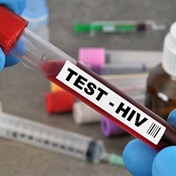The level of HIV-1 in the blood of an HIV-infected partner is the single most important factor influencing risk of sexual transmission to an uninfected partner, according to a multinational study of heterosexual couples in sub-Saharan Africa.
The study, published in the Journal of Infectious Diseases, calculated the risk of HIV-1 transmission per act of sexual intercourse and found the average rate of infection to be about 1 per 900 coital acts. The findings also confirmed that condoms are highly protective and reduce HIV infectivity by 78%.
James P. Hughes, PhD, and colleagues at the University of Washington and the Fred Hutchinson Cancer Research Center, in Seattle; the University of Witwatersrand in South Africa; the University of Nairobi and Kenyatta National Hospital, in Kenya; and the Rwanda-Zambia HIV Research Group conducted a study that included 3,297 HIV-discordant couples (where one person is HIV-infected, and the other is not) in eastern and southern Africa who were enrolled in a randomised trial of acyclovir suppressive therapy.
The couples had frequent follow-up to measure plasma HIV-1 RNA in the infected partner and genetic testing to link the transmitted virus to the index HIV-infected partner, to prevent inclusion of infections acquired from other possible partners. HIV acquisition was not affected by the acyclovir therapy.
Condoms are highly protective
The study confirmed that condoms are highly protective, reducing the risk of HIV transmission by 78% when subjects reported using a condom. Most important, the authors noted, was the level of HIV-1 RNA in the blood of the infected partner.
The higher the viral load in the index infected partner, the higher the risk of transmission, emphasising the importance of lowering viral load to help prevent the spread of HIV-1 through sex. Older age was associated with reduced transmission per sex act, and male circumcision reduced female-to-male transmission by approximately 47%. Genital herpes infections and the presence of genital ulcers were associated with increased rates of transmission.
"Our results underscore the importance of antiretroviral therapy, and, possibly, treatment of co-infections, to reduce plasma HIV-1 viral load in HIV-1 infected partners, and condom promotion, male circumcision, and treatment of symptomatic sexually-transmitted infections for HIV-1 uninfected partners as potential interventions to reduce HIV-1 transmission," the authors wrote.
The risk of transmitting HIV
The findings also showed that the risk of an HIV-infected man transmitting an infection to a woman not infected with HIV was about twice the risk of an HIV-infected woman transmitting to an HIV-uninfected man. However, this difference can be attributed to the difference in viral loads between men and women, the authors noted.
On average, HIV-infected men have higher HIV-1 loads. Difference in age and having genital herpes in the HIV-uninfected partners also help account for the disparity—the HIV-uninfected female partners were, on average, younger and had higher rates of genital herpes than their male counterparts.
Previous studies examining HIV-1 per-act infectivity have been significantly smaller and not as comprehensive in terms of measuring plasma HIV-1 RNA and the use of genetic linkage of transmissions. In an editorial commentary, Ronald H. Gray, MD, and Maria J. Wawer, MD, both of Johns Hopkins University in Baltimore, noted that Dr. Hughes and his colleagues have possibly recorded the most precise estimates of HIV-1 transmission per sexual act during latent HIV disease, providing a valuable addition to knowledge in this area, where much remains to be learned.
Additional research using the genetic data collected from this study, in addition to new data from another recently completed clinical trial, is planned to help explain the variation in transmission risk among couples, the authors noted.
Fast Facts:
- In HIV-discordant couples—where one partner is infected with HIV, and the other is not—viral load of the infected partner was a major factor affecting the HIV transmission rate.
- Condom use among HIV-discordant couples was 78 percent effective in preventing transmission to the uninfected partner.
- Factors such as age, male circumcision status, and sexually transmitted infections also affected transmission probability.
(EurekAlert, January 2012)
Read more:
Transmission through sexual acts
Symptoms and phases of HIV infection and Aids




 Publications
Publications
 Partners
Partners










